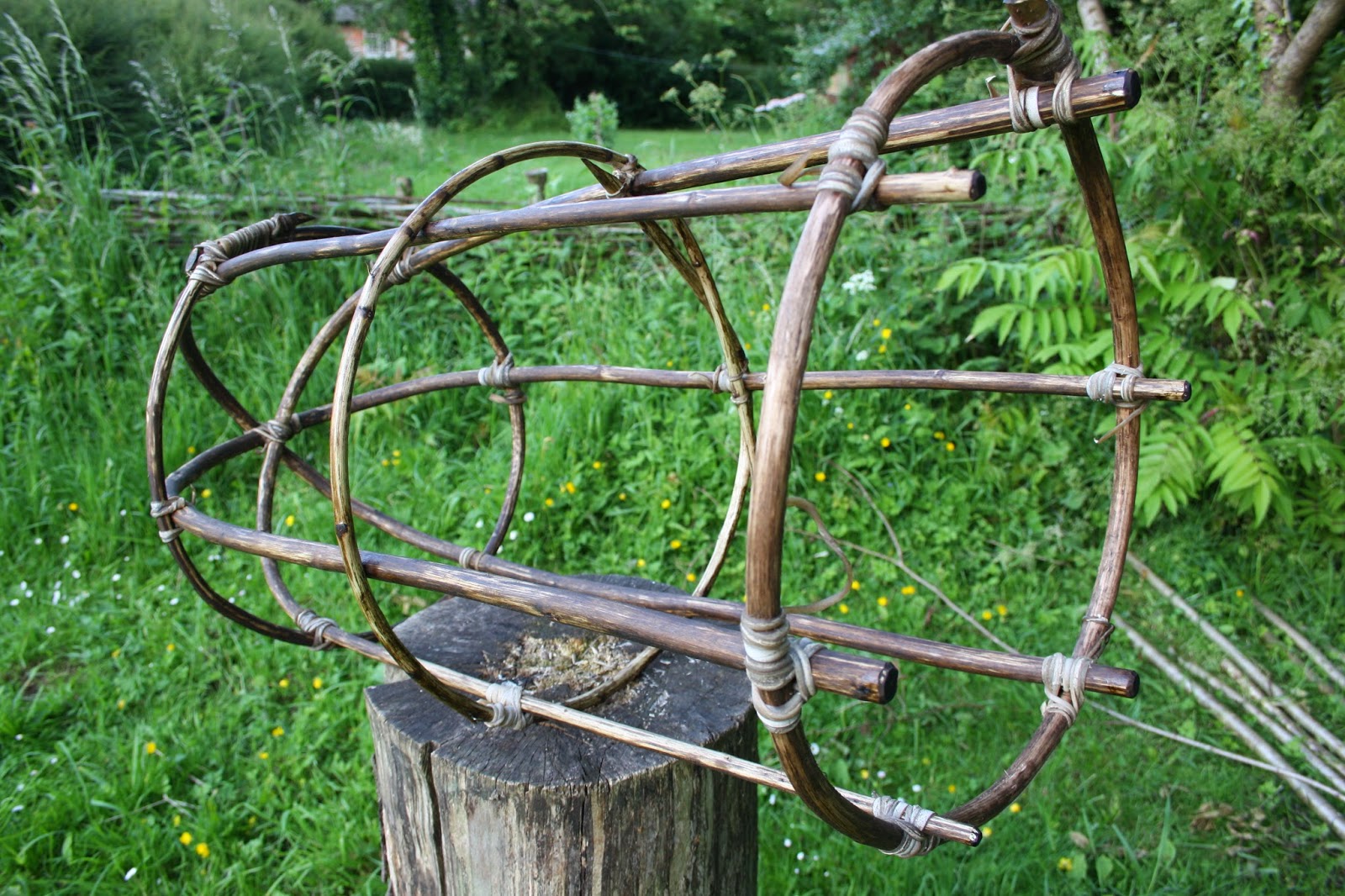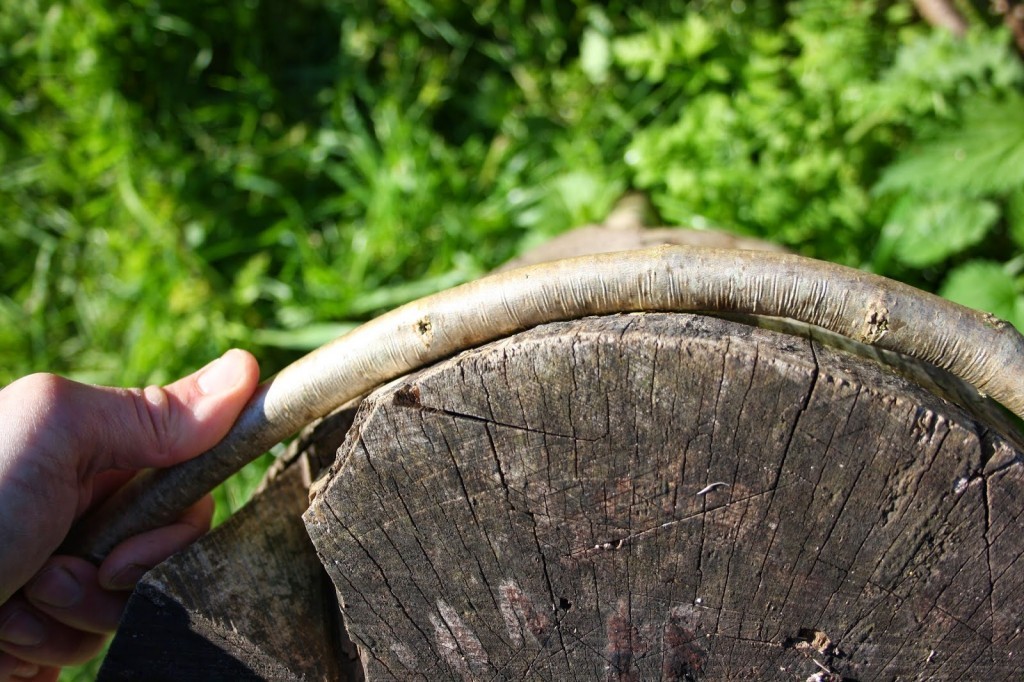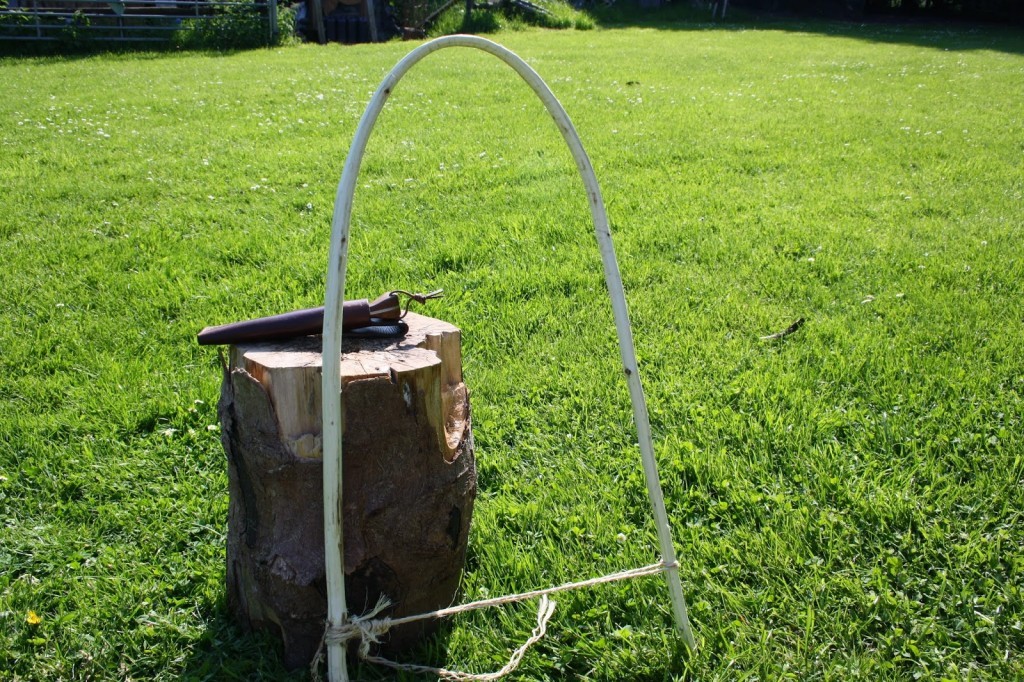This amazing pack is handcrafted using natural materials found in your surroundings and rawhide.
It is strong and durable enough to handle all but the heaviest loads while hiking; your back will likely need a rest or maintenance before it does.
Bushcraft as a subject is difficult to define having many variables and countless connotations, meaning different things to different people. Those of us who like to trace a skill back to it’s roots in order to understand it completely, look to the sketchy clues of the past for inspiration.
One such window discovered in the Otztal Alps, September 1991 was Otzi, the ice mummy found still surrounded by a good amount of his personal possessions just over 5,000 years after perishing in the snow. Setting aside the mysterious circumstances of his demise for now, the fact that he was moving through such treacherous terrain meant that he must’ve had total confidence in his clothing and gear to even consider it as a realistic option. No goretex covered, down filled jacket for this chap! Instead, his outfit had been skilfully made up from grasses, animal hides, bark, stone, sinews and wood. Everything he carried and wore had been crafted from the woods, rivers, mountains and meadows he had lived amongst all his life. So based on this evidence and other similar examples, a motivated and skilled bushcrafter could theoretically put together a whole outfit, proving that everything a person needs really can be found in or made entirely from natural resources.
Otzi’s pack frame:
Otzi had what most people think was a pack frame lying near him. If so, then this item alone illustrates perfectly, the combining of skills and knowledge that a bushcrafter strives for. A two metre bent hoop of hazel rod formed the frame itself so the maker must have known about hazel as one of the more flexible woods. Two backboards of larch were lashed securely to this using plant fibre cordage meaning that the maker knew which species provided strong cordage and also how to process and construct the cordage needed. A goatskin kit bag was believed to have been fastened to the frame so a working knowledge of how to preserve and cure animal hides in order to make leather and buckskin would have been needed. I don’t believe any shoulder straps were found but these must’ve been present originally and it would be fair to assume these were also leather of some sort. The images of the broken frame, despite being extremely ancient remind me hugely of some modern day external frame packs I have lugged over hill and dale so it doesn’t seem beyond comprehension that I might be able to make up a close copy that might actually be effective and maybe even comfortable to carry. After all, Otzi did apparently haul his original model most of the way up a snowy mountain with an arrow head lodged deep in his shoulder! You can’t really get a better recommendation than that.
Construction:
My first job was to cut and bend a two metre length of hazel wood. Having had some success with steaming and bending wood in the past I decided to give it a whirl by suspending the hazel rod over a steaming pot of water, covering both rod and pot with a damp towel. The rod was quite thick and the bend in the middle, pretty tight so my first couple of steaming attempts resulted in splintered hazel. ‘Let’s keep this simple’ I thought so I decided to gently coax the freshly cut section by hand, around a stump acting as a former. This worked well so after scraping the bark off, I tied the frame in position to let it ‘set’ overnight.
Otzi’s original back boards were larch wood (yet I’ve also read that they were elm) so just to be different, I made one from yew and the other from field maple. These back boards were split from round timber then carved into two thin planks. I drilled two holes in each end to provide secure lashing points, of course using a flint burin mounted into a hand drill spindle using rawhide lashing and pitch. This worked very well indeed! As I had every intention of using the pack frame I wanted to improve on the original by sealing the wooden parts with birch tar and using deer skin rawhide for really strong, durable lashings instead of the original plant fibre cordage. The rawhide lashings would be applied damp, shrinking as they dried gripping the work even tighter. My birch tar coating gave the wood a nice ‘antique’ effect and strong creosote smell which appealed to the eye but definitely not the nose (although it did keep the bugs away).
The shoulder straps were made from two 3” wide lengths of fallow buckskin, stitched around the frame with buckskin thonging and tied in place around the horns at the bottom end.
One tip: Depending on the size pack you are hauling, if you were in a survival situation, you may not have enough rawhide on hand to make the straps, so any strong material or materials doubled up would work.
If you want to see other amazing projects like this, please visit Wilderness Survival Skills and Bushcraft Antics.


